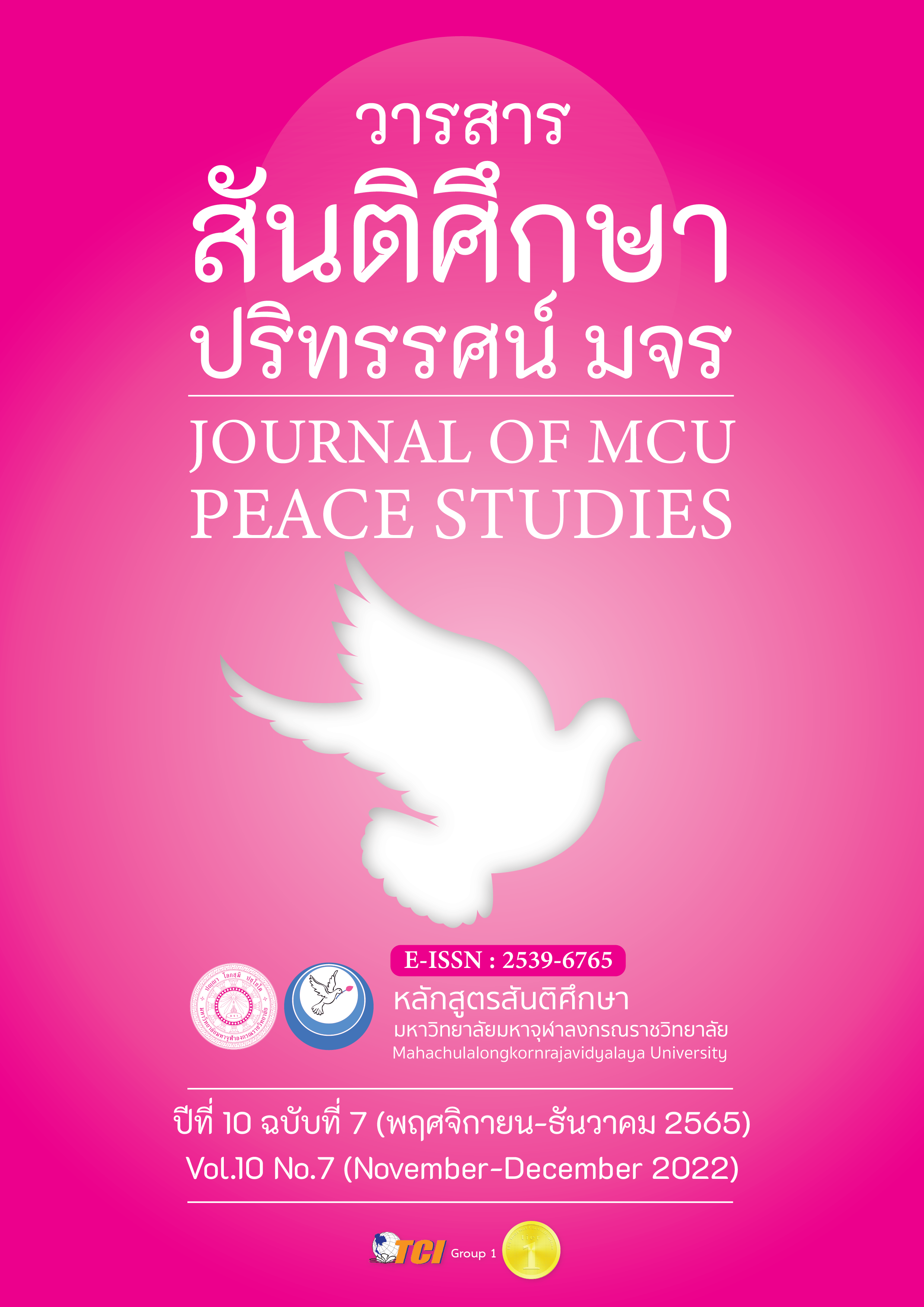Using Service Design Principles for Creative Community-Based Tourism Development: A Case Study in Ban Pangha, Koh Chang Sub-district, Chiang Rai Province
Main Article Content
บทคัดย่อ
This research article was a case study in Ban Pangha, a small village in Chiang Rai Province. The objectives included, in brief; 1) investigating tourism elements and characteristics in Ban Pangha; 2) applying service design to development of a creative community-based tourism model; and 3) developing a guideline and strategy for creative community-based tourism in Ban Pangha. The study was conducted as a multidisciplinary, multimethod qualitative study. Theoretical perspectives from service marketing, including service design, 7Ps and design thinking, were combined with theoretical perspectives from tourism, including creative and community-based tourism and sustainable development. The double diamond model of design development was employed to structure the process of data collection, analysis and synthesis of the service design and guideline. Multiple stages of qualitative research were conducted, including site visits, expert opinion surveys, in-depth interviews with regional visitors, community leaders and people as well as tourism experts, and a co-creation workshop. Analysis of the data collected during these periods included content analysis and synthesis.
The research results found that (based on the research objectives):
- Ban Pangha has multiple existing small-scale tourism sites, most of which are creative in nature. These sites focus on mulberry production and the related saa paper making, along with local homestay tourism and local artistic and cultural performances. These tourism sites and activities have generally trended toward creative tourism (for example the Jinnaluck Miracle of Saa attraction), but there is no coordinated service design and management of the sites.
- A draft service design was developed for Ban Pangha tourism using a community-based tourism model. This draft service design, which was based on insights from tourism experts, visitors and community leaders and local people, is called the PPMM model (standing for People, Product, Management, Marketing). Each of these dimensions is developed to address specific needs and values of tourists, while at the same time providing for community sustainability.
The draft service design was tested in a second round of in-depth interviews and refined to develop a product guideline and strategy for the community. The refined service design incorporates sustainability value for the community and tourism service value for the visitor, using several focal points. The guideline plans the customer journey, front stage and back stage activities required to develop creative community-based tourism (CBT) in Ban Pangha, Chiang Rai province.
Article Details

อนุญาตภายใต้เงื่อนไข Creative Commons Attribution-NonCommercial-NoDerivatives 4.0 International License.
ทัศนะและความคิดเห็นที่ปรากฏในบทความในวารสาร ถือเป็นความรับผิดชอบของผู้เขียนบทความนั้น และไม่ถือเป็นทัศนะและความรับผิดชอบของกองบรรณาธิการ ยินยอมว่าบทความเป็นลิขสิทธิ์ของวารสาร
เอกสารอ้างอิง
Blackstock, K. (2005). A Critical Look at Community Based Tourism. Community Development Journal, 40 (1), 39–49.
Blythe, J. (2013). Consumer Behaviour. (2nd ed.). London: Sage.
DASTA. (2018). Creating Creative Tourism Toolkit. Retrieved March 19, 2021, from https://tis.dasta.or.th/dastaknowledge/wp-content/uploads/2019/01/ct-toolkit_th.pdf
Design Council. (2021). What Is the Framework for Innovation? Design Council’s Evolved Double Diamond. Retrieved March 15, 2021, from https://www.designcouncil.org.uk/ news-opinion/what-framework-innovation-design-councils-evolved-double-diamond
Griffin, T. (2012). An Optimistic Perspective on Tourism’s Sustainability. In Williams, P., Harris, R., & Griffin T. (Eds.). Sustainable Tourism: A Global Perspective (pp. 24–34). New York: Taylor & Francis.
Hall, C. M. (2019). Constructing Sustainable Tourism Development: The 2030 Agenda and the Managerial Ecology of Sustainable Tourism. Journal of Sustainable Tourism, 27(7), 1044–1060.
Kotler, P., & Armstrong, G. M. (2012). Principles of Marketing. (14th ed.). London: Pearson.
Okazaki, E. (2008). A Community-Based Tourism Model: Its Conception and Use. Journal of Sustainable Tourism, 16(5), 511–529.
Ray, N., Das, D. K., & Kumar, R. (2018). Tourism Service Marketing: A Dynamic Approach. Watertown, NJ: Apple Academic Press.
Richards, G. (2009). Creative Tourism and Local Development. In Creative Tourism: A global Conversation (pp. 78–90). New Mexico: Sunstone Press.
Richards, G. (2011). Creativity and Tourism. The State of the Art. Annals of Tourism Research, 38(4), 1225–1253.
Richards, G. (2020). Designing Creative Places: The Role of Creative Tourism. Annals of Tourism Research, 85, 102922.
Tan, S. K., Kung, S. F., & Luh, D. B. (2013). A Model of “Creative Experience” in Creative Tourism. Annals of Tourism Research, 41, 153–174.
Thanthong-Knight, R., & Chuwirich, P. (2021). Thai Tourist Arrivals at Decade Low as New Wave Clouds Outlook. Retrieved April 22, 2021, from https://www.bloomberg.com/news/ articles/2021-01-25/thai-tourist-arrivals-at-decade-low-as-new-wave-clouds-outlook
Ubonsri, B., & Pannun, A. (2013). A Study of Applying Sufficiency Economy to Lifestyles and Use of Resources at Community Levels. Procedia Environmental Sciences, 17, 976–983.
World Travel Organization. (2019). International Tourism Highlights. (2019 Edition). Retrieved May 21, 2021, from https://www.e-unwto.org/doi/pdf/10.18111/9789284421152


